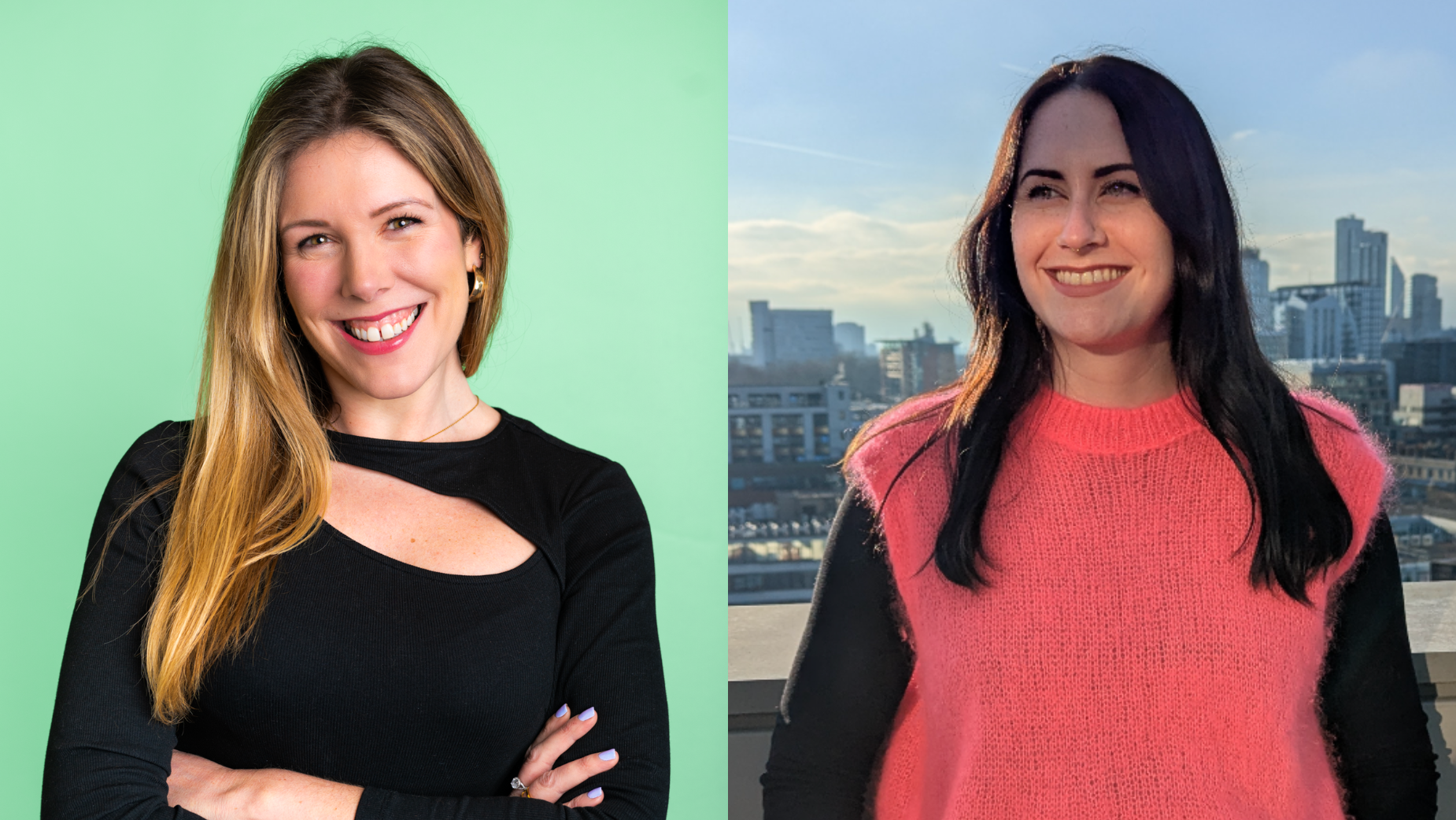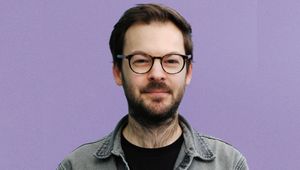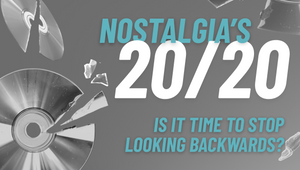
Why it’s Time for More Female Creative Directors

Amy Butterworth is creative director of Born Social. A strategic leader and conceptual thinker, with 15 years experience both in-house and agency side, developing x-channel campaigns and content strategies and directing end-to-end creative delivery across a range of luxury, FMCG, automotive, retail, property, travel and lifestyle brands, including:
The Ritz Hotel, Aston Martin, Evian, Creed Fragrances, Aperol Spritz, Maybourne Hotel Group, HSBC, Tesco, Volvic, Mothercare, myGemma, Bicester Village, 7forallmankind, Schweizerhof Hotels, Annoushka, Balblair, JLL Real Estate, The William Vale, Badoit, Hankey Bannister, and many more!
Sam O’Kitchin is creative director at Born Social, with over 12 years of experience across social media, branded content, digital, and publishing. She leads creative strategy for client work and new business, known for her big-picture thinking and integrated campaign expertise.
She’s worked with brands including Uber Eats, Häagen-Dazs, Mars, KFC, Ford, and the NHS, with award wins from Campaign, Digiday, and the ARIAs. Before Born Social, Sam held creative and strategic roles at Bauer Media, LADbible Group, and Guardian News & Media.
A champion of inclusive creativity, Sam mentors through Arts Emergency, Brixton Finishing School and Creative Equals, and sits on the Born Ready and sustainability and DE&I committees. In industry, she’s served on juries for D&AD New Blood and Creative Circle Awards.
LBB> In one sentence, what’s the issue on your mind right now?
Amy> Only 12% of creative directors in the UK are female. That needs to change.
Sam> Building on Amy’s point – the numbers are already dire, and they only get worse when you add intersections like class and ethnicity.
LBB> Now explain any additional context or detail.
Amy> If you’d told a teenage me that I’d one day be a creative director, I’d have A) asked, ‘What’s that?’ and B) laughed.
I didn’t see many women in senior roles – especially not in the creative industries – so it didn’t even feel like a possibility.
Along the way, I’ve faced plenty of challenges: balancing work with family life, rising childcare costs, and trying to find my place in a world still largely led by men.
Fast-forward to today, and I’m lucky to be part of the Born Social team, where flexible working is the norm – but I know that’s not the case everywhere. The system simply isn’t built to support women, whether they’re parents or not.
And here’s the kicker: women drive a huge portion of household spending, yet so few of us are in the rooms shaping the campaigns aimed at us. That has to change.
Sam> I’m from a working-class background. I’ve been in the industry for 12 years, and I learned quickly that I needed to change the way I spoke to fit in with my peers and superiors – and that’s as someone with all the benefits of white privilege and a North West London accent.
When you’re already fighting for your rightful place in a male-dominated field, those added feelings of ‘otherness’ create a mental load that’s all-consuming.
The system we are a vital part of wasn’t built for women – it was built in spite of us.
And it still doesn’t recognise the value of the insights and unique creative perspectives that come from truly diverse backgrounds.
LBB> Why does it matter to you?
Amy> It matters because I want to see more women in positions where they’re shaping the future of creative work, not just surviving in it.
Having worked my way up, I’ve experienced firsthand how tough it can be to build a career in a male-dominated industry while managing personal responsibilities.
But that challenge doesn’t hold me back – it fuels me. It’s what drives me to create space for more women, especially those from underrepresented backgrounds. Because when women are in the room, the work changes. We ask different questions. We bring new insights. We create campaigns that are more emotionally intelligent, more culturally relevant, and more commercially effective.
Take flexible working: at Born Social, it’s helped us retain incredible talent, myself included. I’ve been able to lead at a high level while still showing up for my daughter. That kind of balance shouldn’t be rare.
According to research from McKinsey, companies in the top quartile for gender diversity on executive teams are 25% more likely to have above-average profitability. So it’s not just a moral issue – it’s a business one, too.
Sam> Our COO, Char Hamill, puts it perfectly: “Equity, not equality.”
Because in most cases, it’s not a level playing field when you show up to an interview. I worked three jobs during university just to support myself, which meant giving up any idea of doing art or writing on the side, putting me at a significant disadvantage to peers who had the time and means to build rich portfolios of side projects and creative experiments.
I didn’t even know ‘creative director’ was a job until three years into my career. I took the first role I was offered – in media sales – because I needed the money, and I clawed my way over from there. The lack of time and resources is something that defines many women’s experiences.
We’re more likely to hold caring responsibilities, to take on the bulk of housework and childcare. We’re also the ones more likely to lose leadership status the moment we decide to have a child. So we’re less able to work long hours or travel at a moment’s notice – but that shouldn’t be a dealbreaker.
I’m tired of seeing brilliant women’s careers stall or end altogether just because a boss demands rigid hours or constant office presence, when flexible approaches are not only possible, they’re proven to work.
According to Pregnant Then Screwed, maternity discrimination remains high, affecting three in four mothers who report experiencing workplace discrimination, with 74,000 women annually forced out of their jobs because they started families.
In over a decade, I’ve worked with just one female creative director – Amy Butterworth – and I only met her last year, here at Born Social.
LBB> Why does it matter enough to the wider industry?
Amy> The wider industry needs more women in senior roles because diversity of thought leads to better creative work – full stop.
When leadership skews toward one type of person – often white, male, and middle class – we miss out on the richness that different lived experiences bring. Women play a central role in driving household spending, yet we’re still underrepresented in shaping the messaging aimed at us. That disconnect shows up in tone-deaf campaigns and missed opportunities.
But when agencies build teams that reflect the audiences they’re speaking to, the work is sharper, more resonant, and more successful. Brands like Unilever and Diageo, who’ve committed to 50/50 gender representation in marketing leadership, are seeing the benefits in brand trust and long-term growth.
At Born, we’re proud to be part of that wider movement – but we want to see more agencies joining in, not treating it like a bonus, but a baseline.
Sam> Going back to intersectionality – I’ve even heard black female creative directors referred to as ‘unicorns’. Honestly, that’s embarrassing for us as an industry. We’re clearly aware there’s a problem, yet instead of solving it, we’re giving it a quirky label.
The number of female CDs has actually gone down, so we need to start having the tough conversations. We need to interrogate why creative departments aren’t giving women the space and opportunity to thrive. That’s why it’s great to see SheSays calling for allies – because women can’t do this alone.
LBB> Why does it remain an issue?
Amy> This remains an issue because the system wasn’t built with women in mind from the get-go, especially those women balancing careers with caregiving responsibilities. The rising cost of childcare, rigid expectations around presenteeism, and outdated perceptions of leadership all make it harder for women to progress.
And it’s not just about motherhood. Women without children still face barriers – from being talked over in meetings to receiving feedback that’s more personal than constructive. There’s also a persistent stereotype of what a creative director ‘should’ look and sound like.
Until we dismantle those old narratives and value a broader range of leadership styles – collaborative, empathetic, inclusive - the imbalance will persist.
But I’m hopeful. Change is happening, and slowly but surely, I see more women stepping into senior roles and doing things differently – and brilliantly.
Sam> People often aren’t aware of their own biases – or even their internalised misogyny – when it comes to taking women’s creative direction seriously.
The legacy of men dominating creative leadership has shaped how we perceive what a ‘good leader’ looks like. And traits like collaboration and empathy, which you often see in women, are still vastly undervalued. Women also tend to receive more personal or contradictory feedback, which only reinforces these structural issues. And the lack of representation makes it worse.
Every time I hear an intensely gifted female creative talk about impostor syndrome, I want to scream.
LBB> What should we be doing about it?
Amy> First and foremost, we need more flexible working options across the industry. At Born Social, for example, we prioritise work-life balance – not just for parents, but for anyone with responsibilities outside of work. More agencies should be adopting similar policies.
But flexibility alone isn’t enough. We also need to encourage more women to go for leadership roles and make sure they have the tools to succeed once they’re there.
That means offering real mentorship, career development opportunities, and actively challenging outdated ideas of what a creative leader should look and sound like.
It’s about making space for different leadership styles, different ways of thinking, and recognising that that’s where stronger work comes from.
Sam> We need deeper education around leadership styles – so that when you're lucky enough to work with a female creative director, you truly value her.
Inclusion forums that address biases and microaggressions are crucial. There’s no point hiring someone into a role if the environment becomes intolerable once they arrive.
We should tackle imposter syndrome the moment it shows up, encourage men on the team to actively support their female colleagues, and focus on building psychological safety, so teams can recognise, discuss, and dismantle the biases and blockers holding people back.
Playful competition over the work? That’s healthy. Gatekeeping opportunities? That’s the kind of toxic behaviour we need to leave behind.
LBB> And what are the first steps?
Amy> Start with your policies, because they shape your culture. Ask yourself: is your flexibility truly inclusive? Are your promotion pathways clear? Would someone with caring responsibilities still be able to thrive at your agency?
Then look outward. Can you build partnerships with organisations like Creative Equals, Bloom, or SheSays to support women in your team and beyond?
And most importantly: listen. Create spaces where women feel safe to share what they need – and then act on it. Don’t wait for a crisis or a resignation letter to make a change. A creative industry that genuinely supports women isn’t just fairer – it’s stronger, bolder, and far more future-fit.
Sam> Stop telling women they need to prove themselves — the men aren’t being told that. We need to move with an equity, not equality mindset. Fostering a feedback culture is key, and it’s something that works really well at Born Social. I know I can go to our COO or chief creative officer and have an open, healthy conversation where I’m genuinely heard. And ultimately, offering truly flexible working is one of the most effective ways to empower and retain brilliant female talent.
LBB> Are there any people or businesses leading the way?
Amy> I think a lot of progress is happening behind the scenes – especially in agencies like Born Social, and there are other agencies out there also helping to grow strong female leadership within their creative departments, which is promising.
But more importantly, I’m seeing a broader shift – an industry-wide appetite to do better. Initiatives like Creative Equals’ returners programme, which helps women re-enter the industry after a career break, are a great example of practical action.
That being said, it can’t just be about one or two agencies or individuals leading the charge. We need to build an industry-wide culture that’s genuinely supportive, inclusive, and gives women the confidence and opportunity to step into roles where they can make a real impact.
At Born Social, we’ve baked flexibility and inclusion into our DNA – and it’s made us stronger creatively, not weaker. I’m proud of what we’re building, but it needs to be the norm, not the exception.
Sam> We’re doing our best at Born Social. Right now, I’m working with more female creatives on our team than I’d ever met in the industry before joining. The men on our team are just as passionate about inclusion as the women – and that’s a big reason why we’ve been able to retain so many brilliant women.
It’s something we actively consider when hiring. We’re not looking for individualistic creatives solely focused on personal progression –we’re building a team that genuinely wants to lift each other up. We aim to live our values every day, and one of our core tenets is: make each other better.
I also look to Mother and Wieden+Kennedy leading the charge with senior creative female leadership.
LBB> Any parting thoughts?
Amy> This isn’t about meeting a quota or ticking a diversity box, it’s about building an industry that reflects the world we live in – and one that works better because of it.
I want the next generation of women to see creative leadership as not only possible, but desirable. I want them to see their identity as a strength, not a setback.
And I want agencies to stop seeing flexibility or inclusion as trade-offs, and start seeing them as superpowers.
If we get this right, we won’t just have more women at the top – we’ll have better ideas, braver work, and a more vibrant industry as a whole
Sam> We all have a role to play in making real space for female leadership. That starts with looking inward and challenging your own perceptions and biases. I’m deeply passionate about this topic, and still, I’m learning every day about my own behaviours and blind spots. But it’s worth the work.
The old-school, monolithic idea of what a creative director should look like is completely out of step with where we are — and where we need to go. Just because something has always been a certain way doesn’t mean it should stay that way.
Our time is now.
Speaking directly to women, you need to take a more active role in dispelling the impostor syndrome.
Stop considering yourself ‘not qualified enough’. I’m not hearing this from men.
Trust your judgement.
Speak up in meetings.
Take up your rightful space on industry panels. Learn to pitch your successes - be unhumble.
Reach out to industry leaders and ask for mentorships, or simply a coffee and chat - there is nothing to lose.
Push yourself to overcome the social conditioning and uncomfortability, because if you’re not putting your own voice out there, chances are it won’t be sought, and ultimately it won’t be present in the work. I’ve learnt this the hard way!















